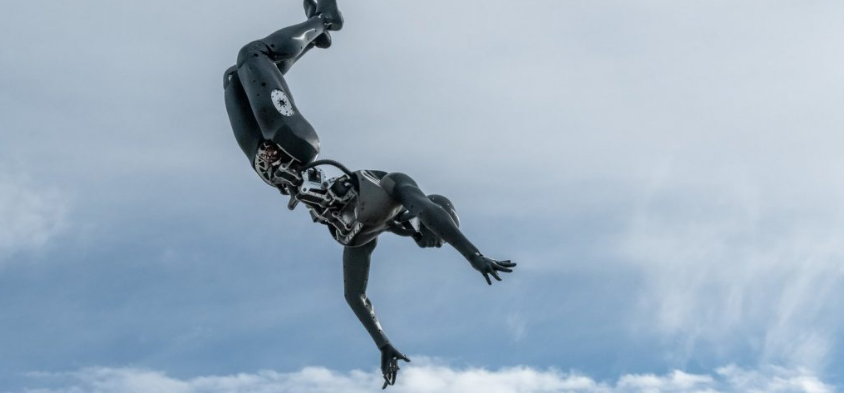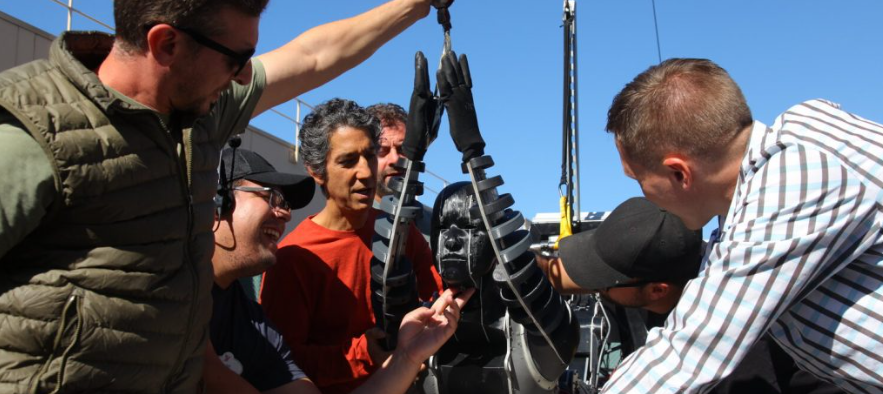Stuntronics: Disney is building ‘stunt robots’ that could change Hollywood forever
Disney is known for magic and innovation, but its latest development—”Stuntronics”—might be its most revolutionary yet. Stuntronics are advanced stunt robots that can perform jaw-dropping aerial stunts previously unimaginable for both humans and machines. Developed by Disney’s Imagineers, these robots combine cutting-edge robotics with dynamic movement, taking action sequences from the screen and bringing them into the real world. Disney’s new “stunt robots” aren’t just a fascinating tech experiment—they could reshape the stunt industry and transform Hollywood forever.
The birth of Stuntronics
At their core, Stuntronics was created to enable superhuman feats, replicating the flight, flips, and precise landings that audiences associate with superheroes. Traditionally, these stunts rely on highly trained human stunt performers. However, Disney wanted to push the boundaries of what’s possible. Imagineers were inspired by the idea that heroes don’t simply walk—they leap, soar, and twist mid-air, effortlessly achieving complex aerial stunts. Stuntronics was designed to capture this magic by executing those precise movements with no wires or safety harnesses. Disney Imagineers equipped the Stuntronics figures with onboard sensors that allow them to perform multiple combinations of twists, flips and poses with incredible precision. Whether a quintuple somersault or a controlled landing, these robots execute each move flawlessly. Disney’s technology captures the essence of superhuman abilities, delivering performances that might even outshine their human counterparts.
The technology behind Stuntronics
The journey to creating Stuntronics started with Disney’s earlier experiments with robotics, including “Stickman,” a z-shaped robot capable of executing single and double backflips. Stickman laid the groundwork for Stuntronics, showcasing how robotics could achieve controlled movement in mid-air. By integrating the principles of angular momentum and advanced motion control, Disney’s team developed robots that could track their position in the air and adjust their body posture accordingly. This project blends robotics with the law of conservation of angular momentum. Stuntronics can control their rotation and centre of mass, meaning they can strike superhero poses mid-air and land accurately, achieving the level of consistency needed for live performances. With each new advancement, these robots become increasingly capable of performing stunts that even seasoned professionals might find challenging or dangerous.

Why Stuntronics matter for Hollywood
Stuntronics hold the potential to be a game-changer for Hollywood, where complex stunts are an essential element of action-packed blockbusters. Traditionally, stunts require rigorous preparation and are often accompanied by substantial risk. With Stuntronics, filmmakers can experiment with previously impossible or too dangerous stunts for human performers. By using robots like Stuntronics, studios can reduce the need for risky rehearsals, saving time and resources and, most importantly, enhancing safety. Stuntronics offer repeatability without the physical toll on human performers, opening up creative possibilities that would otherwise remain theoretical. This is particularly valuable for sequences that demand split-second precision, where even the smallest error could be costly.
The evolution of Disney’s robotics journey
Stuntronics didn’t appear overnight; they evolved through a series of experiments and innovations. Disney’s robotics journey began with Stickman, a simple robot designed to perform aerial flips. Stickman’s success proved that robots could execute complex movements in the air, laying the foundation for Stuntronics. Each iteration brought Disney closer to creating humanoid robots that could move in ways that mimic human agility and control. Disney’s advancements in robotics go beyond Stuntronics. The company has also developed robotic characters for theme park attractions, such as a roller-skating bunny, and has explored other immersive technologies, including virtual reality. Stuntronics represents the next logical step—a leap from basic robotic movements to high-flying, action-ready figures that can bring cinematic moments to life in both theme parks and potentially on film sets.

Potential impact on the stunt industry
While Stuntronics could revolutionise Hollywood, the response from the stunt community is mixed. Some stunt performers welcome the technology, seeing it as a tool to make the industry safer. Robots could take on some of the riskiest aspects of stunt work, allowing human performers to focus on sequences that require emotional engagement and charisma—qualities robots cannot replicate. Renowned Hollywood stuntman Bobby Holland Hanton sees potential in using Stuntronics for rehearsal purposes, as it allows filmmakers to test complex stunts without risking human lives. However, there are concerns that the advancement of robotics could ultimately reduce opportunities for human stunt performers. Humans’ unique artistry and adaptability bring a sense of authenticity that robots, no matter how advanced, struggle to replicate. For many, there is a fear that relying too heavily on robotics could diminish the personal touch and spontaneity that make live-action stunts thrilling. Despite their promise, Stuntronics are not without limitations. For one, they’re still in the prototype phase, with progress moving steadily but cautiously. It may be some time before they’re ready for mainstream use in film production.

Furthermore, as with any technological advancement, there are ethical questions about replacing humans with machines. The development of stunt robots raises concerns about job security and the potential erosion of the traditional stunt profession. Another issue is the danger of over-reliance on robotics. While Stuntronics offer repeatability and precision, they lack the instinctive reactions of human performers. A robot’s movements are based on programmed data, meaning it cannot adapt to unexpected circumstances as a human could. This limitation emphasises the importance of balancing using robots for high-risk actions and maintaining human involvement for stunts that require spontaneity and adaptability.
The future of Stuntronics in cinema and beyond
Looking forward, Disney’s Stuntronics could become a fixture in their theme parks and the broader film industry. As the technology matures, we’ll likely see more filmmakers exploring the potential of robotic stunt doubles. Integrating robotics into live-action filmmaking could redefine the boundaries of stunt work, combining the reliability of machines with the creativity of human-driven performances. Stuntronics could also be a testing ground for future animation and virtual reality technologies. By bridging the gap between the digital and physical worlds, these stunt robots exemplify how technology can bring fantasy to life, making fictional feats appear achievable.



